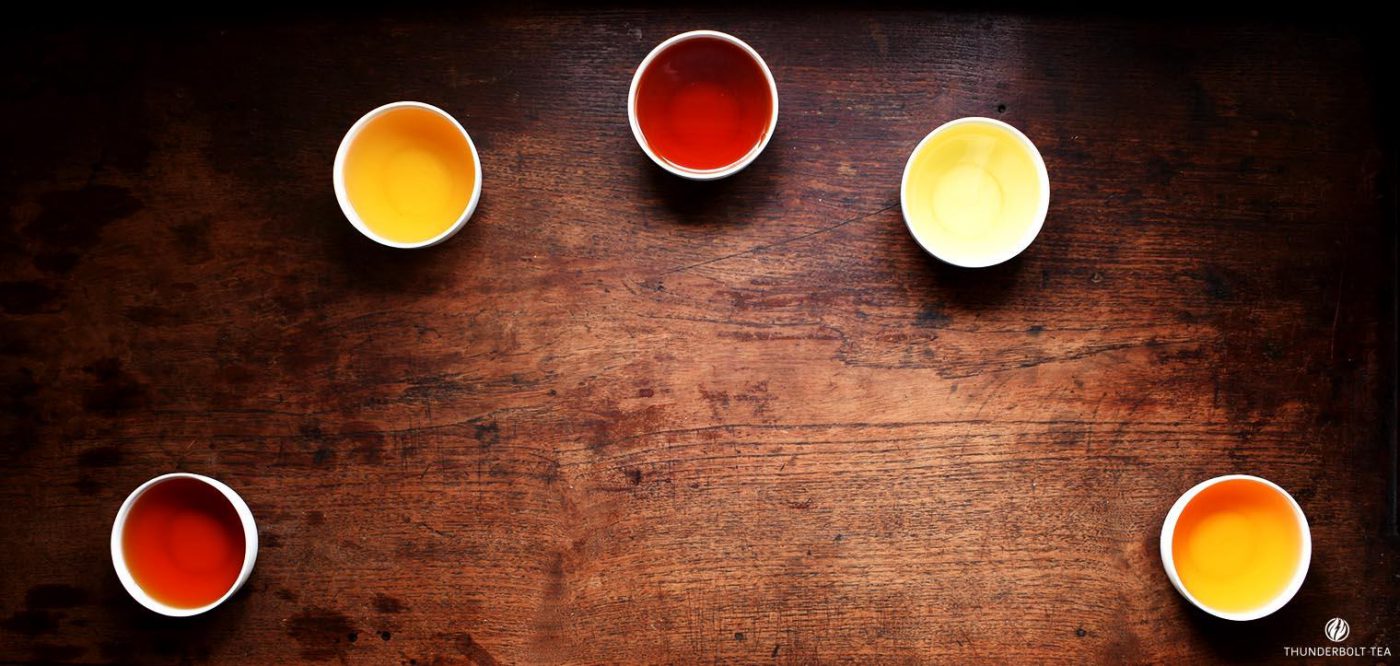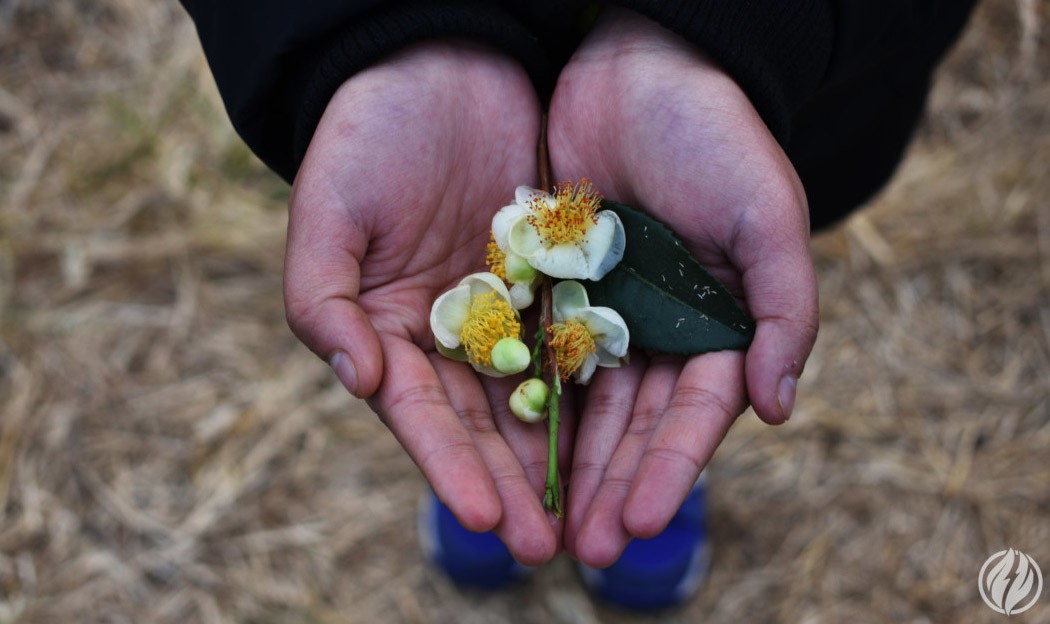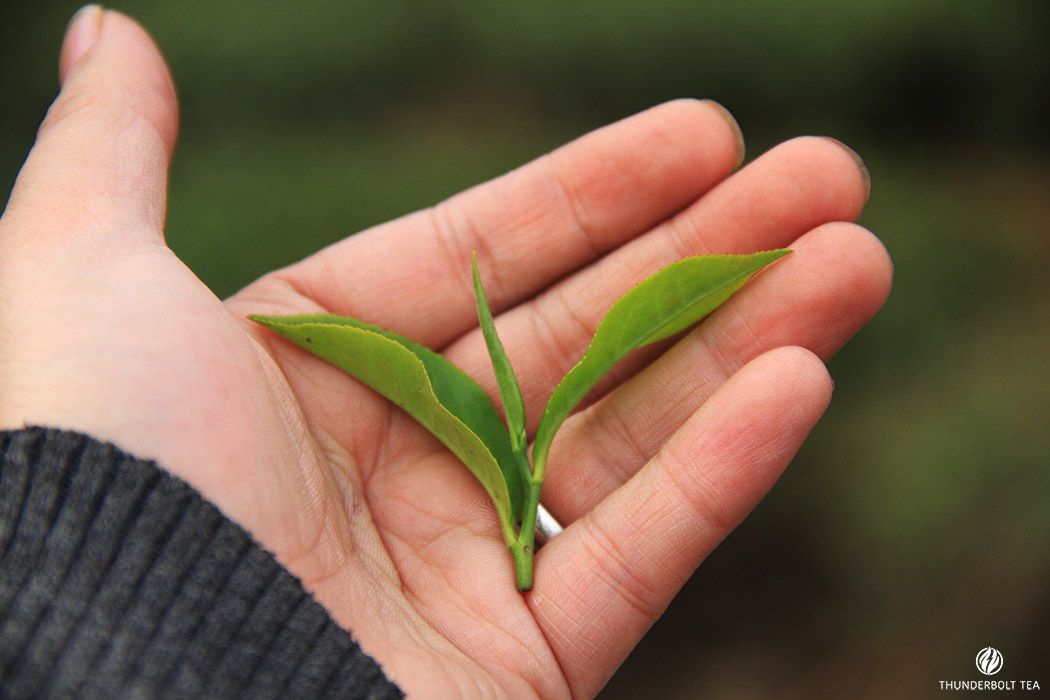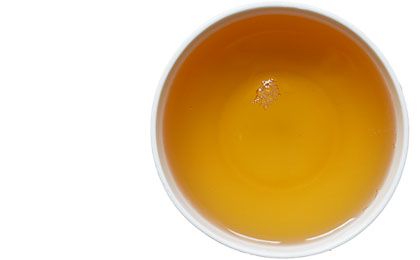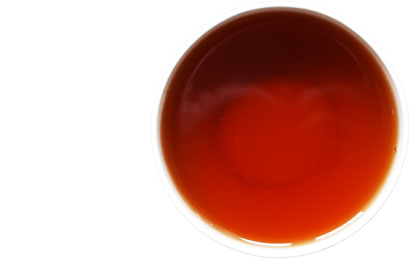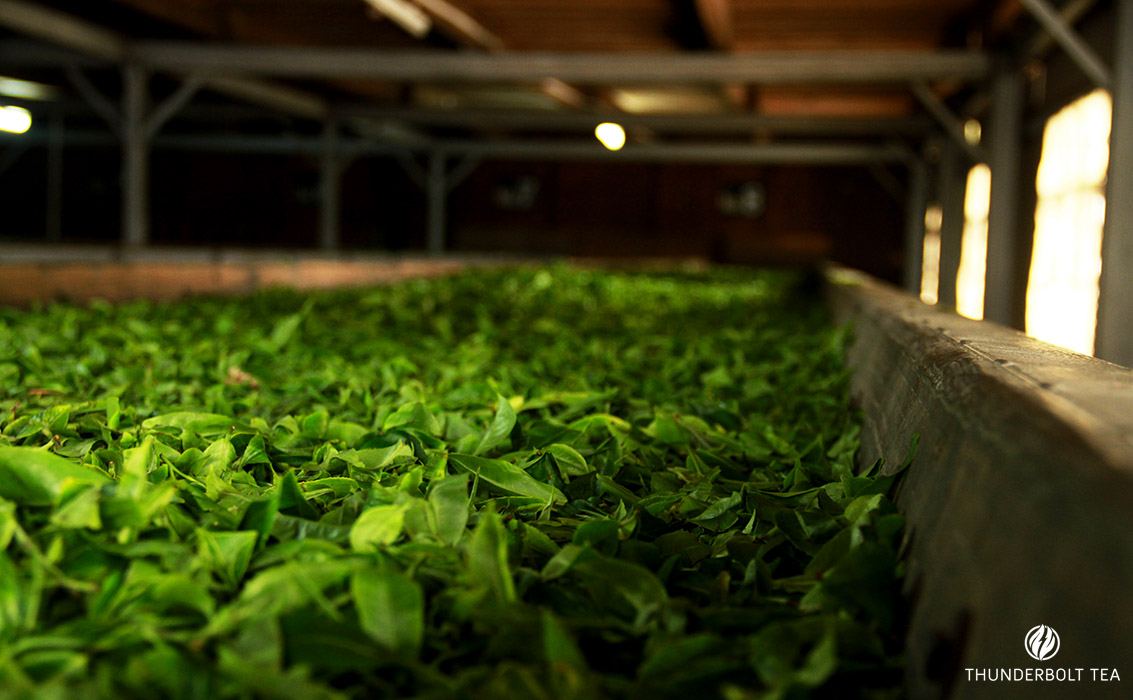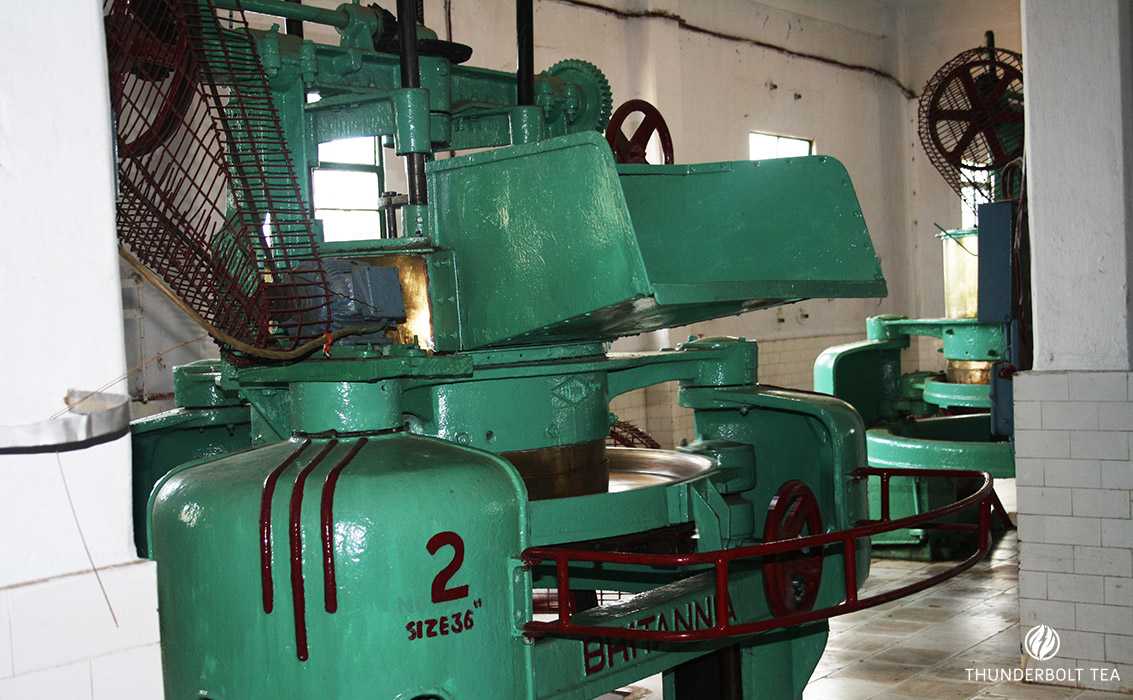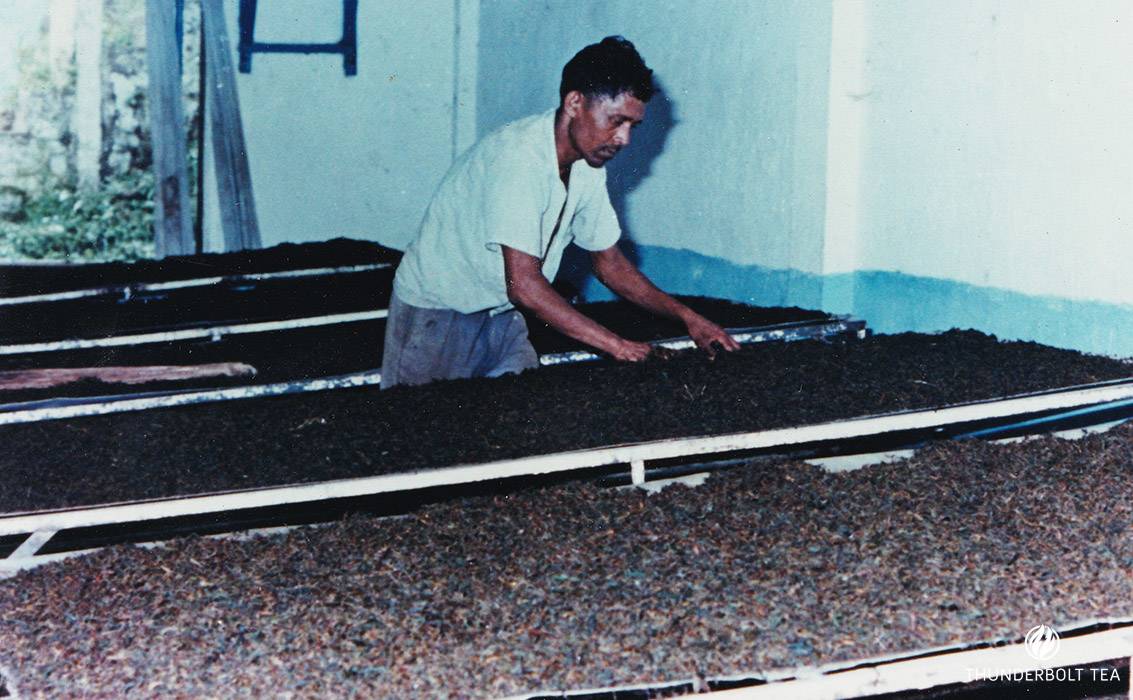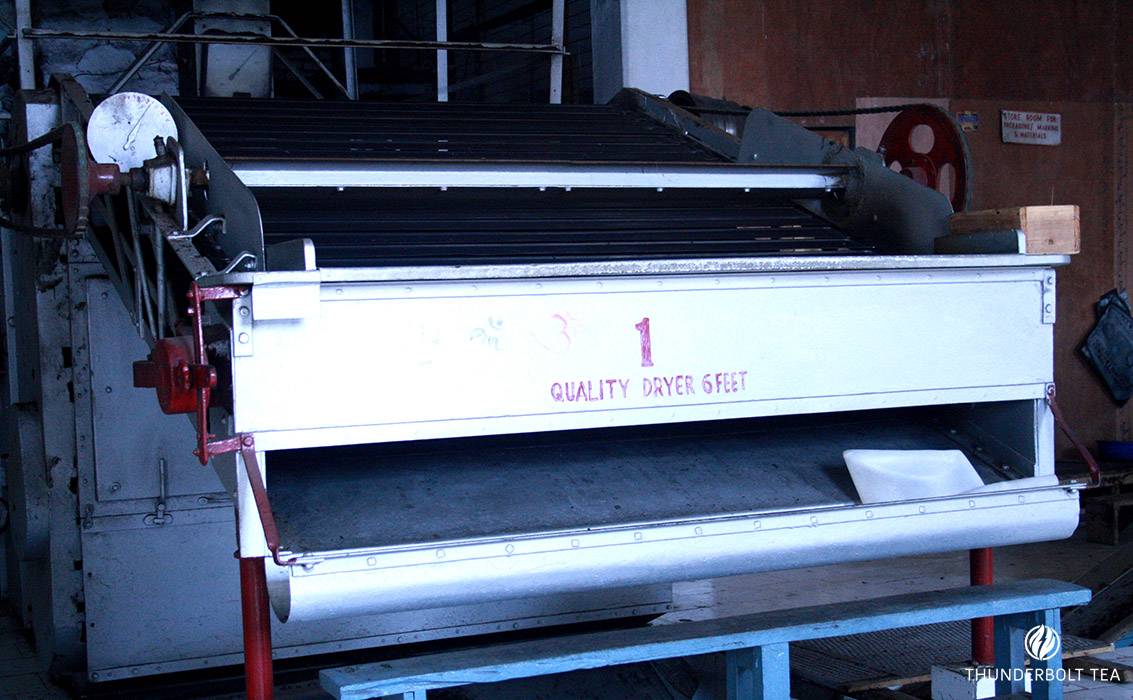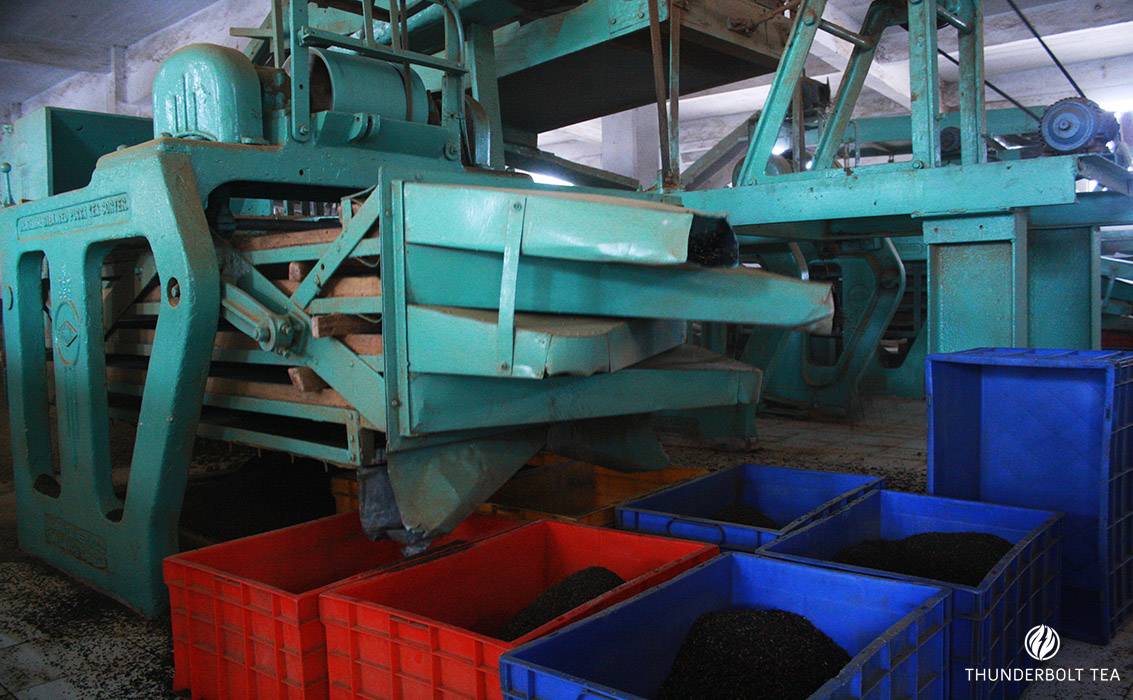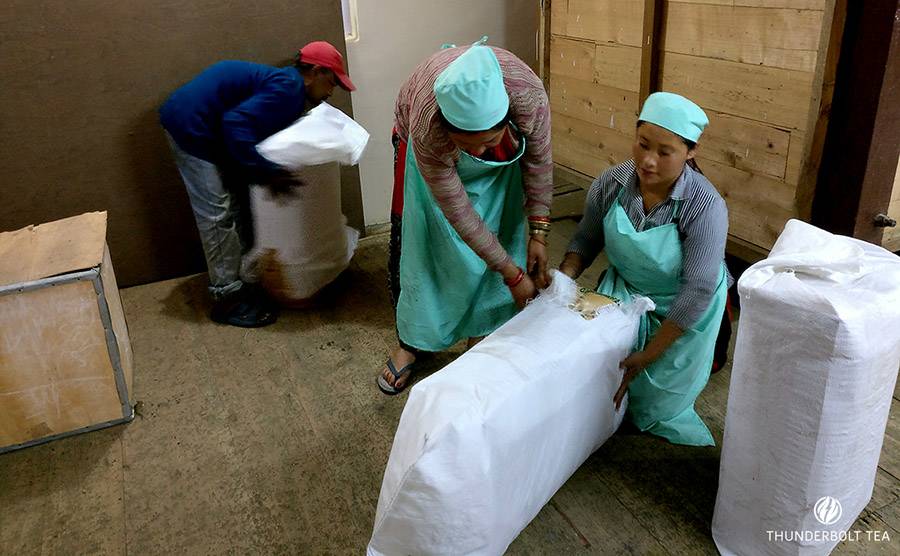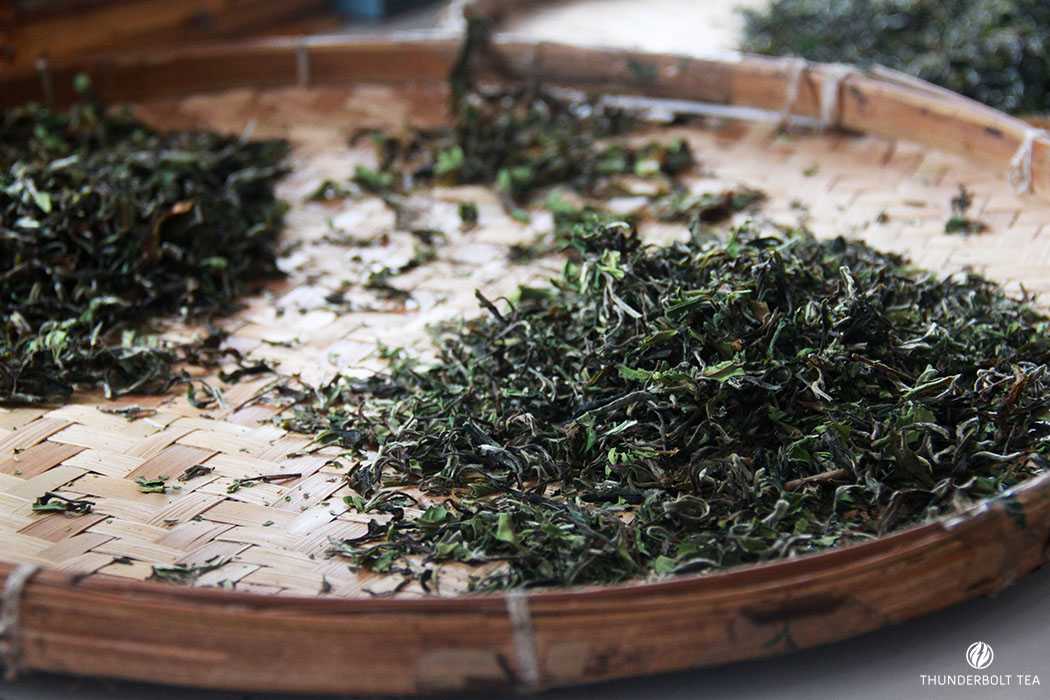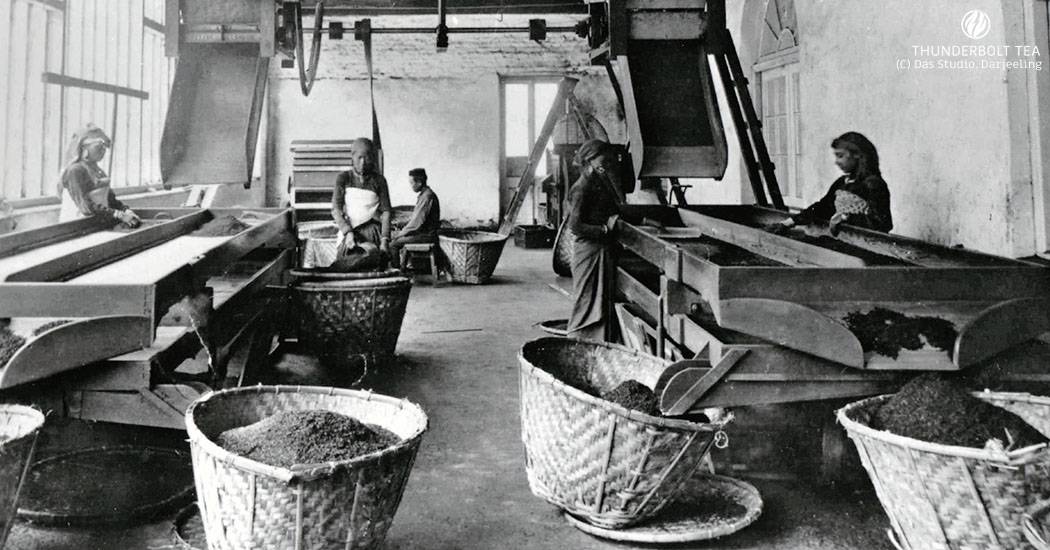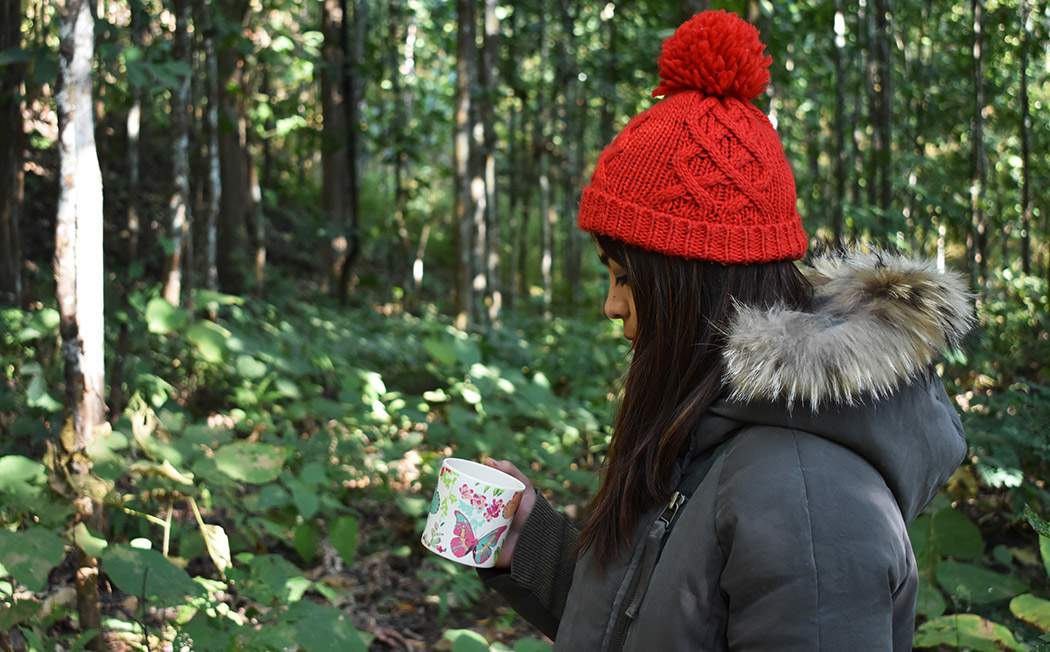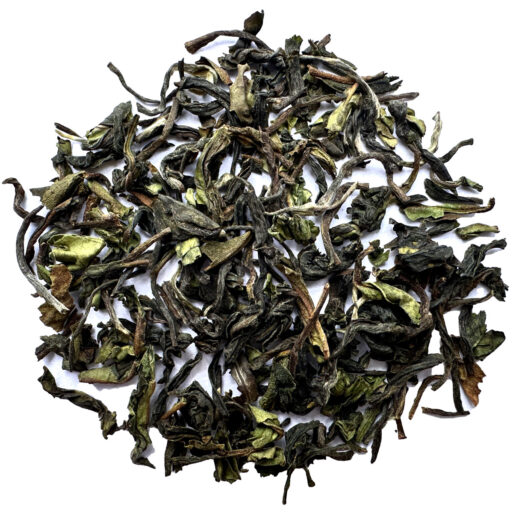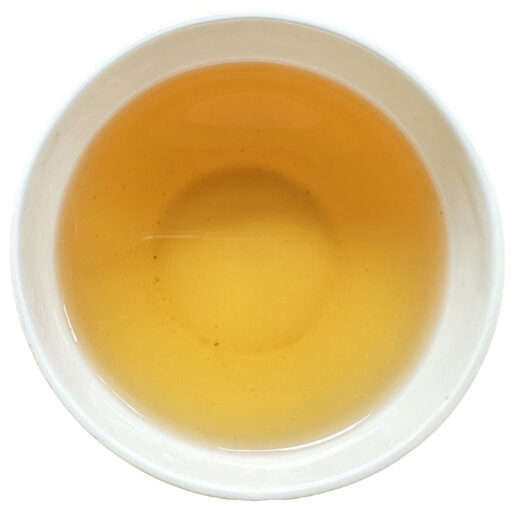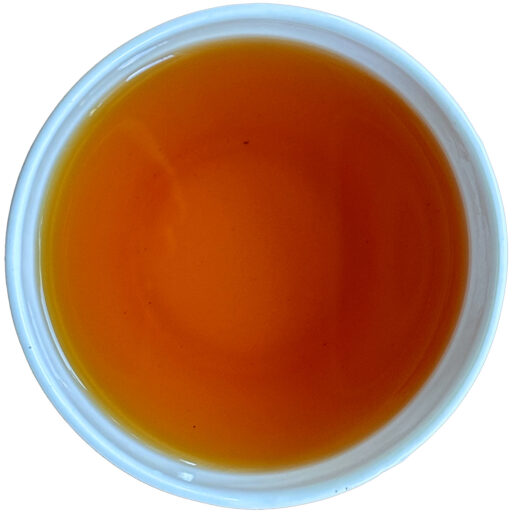Tea among the natives then
The Government distributed 725 kg of tea seed to the natives of the hills round about the Sanitarium. At this time the native tribes in the Himalayas drank tea that was imported from Thibet (Tibet), which was transported thousands of km. It was a coarse, harsh, black tea, which arrives in blocks or bricks of 2,7 kg, or 3,1 kg weight, and 20 cm in length and 10 cm deep, and was sewn up in raw kidskins, where the tea appeared through the stitches at the sides. It costed two shillings a pound.
This tea was made in a large iron cooking-pot full of boiling water, perhaps holding three gallons. A quantity of black tea was chopped from the end of a 'Thibet brick' and thrown, together with a little salt, butter, and parched barley meal. This tea, after having been well stirred, was served up in a metal teapot. Each partaker of the tea produced his or her own wooden teacup from the bosom folds of their capacious clothes, and when the cup had been frequently filled, and as rapidly emptied, it was licked clean by the owner and replaced whence it was taken. Everyone was supposed to carry a teacup about the person and ten or twelve cups full was considered no extraordinary drink for a tea-loving Bhotia.
Contributions of Nepalese Tea workers to the history of Darjeeling Tea
Dr Campbell’s primary problem was to draw the settlers and the natives to this uninhabited region. During this time, Shri Dakman Rai, a nobleman from Nepal had arrived in Darjeeling with a caravan of twenty pack ponies loaded with foodstuffs and other essentials. Shri Dakman Rai was requested by Dr.Campbell to assist him by immigrating and bringing workers from Nepal. Acquiescing to this request, Shri Dakman returned to Darjeeling with a thousand immigrants who all belonged to the Gorkha or the Nepalese community. In appreciation of the helpful service rendered, Mr. Rai was given the grant of free-hold lands presently known as Soureni Tea Estate, Samripani and Phuguri Tea Estate.
But this initial lot of tea laborers did not suffice the requisite. One of the Directors of the Darjeeling Tea Company, Mr. Christison, requested Shri Dakman to provide with additional tea laborers from Nepal. Mr. Christison promised him to supply tea seeds so that he could establish his own tea plantation in the lands that was gifted by East India Company through Dr Campbell. This is how Darjeeling Tea history unfolded the tea gardens initiated by Sri Dakman Rai in 1878 at Soureni, in 1880 at Phuguri and in 1883 at Sampripani. After all the preliminary efforts, by this time each and every tea garden had a team of labor recruiters who used to bring laborers from Nepal, Sikkim and the adjoining areas.
Improvements
The first pioneers suffered a lot while cleaning vast jungles, making roads, terracing hillocks and erecting factories. They lived in bamboo and thatched houses without proper medical and other facilities. By 1870, almost all the plantations began constructing factories with local materials like bamboo, planks, stones and thatch at the lowest levels of the plantations. Some of this factories where driven giant water wheels made either of steel or wood.
Whatever machinery were available then had to be transported by bullock carts and wheeled trolleys pulled and pushed by men and on many occasions there were casualties. The first factory to be mechanized was Tukvar in 1870. Three generations later life was much easier. The planters had a well organized Sports Association and had teams of cricket, tennis, hockey and football.
Initial Tea Production
Tea withering used to be done on bamboo racks and rolling was done manually by feet and hands till rollers came to the tea gardens. Drying was done in a very crude way in big cauldrons which gradually changed to chullis and sorting was done by hand in winnowing fans. Packing was done in boxes of local planks.
Early Tea Cultivation
In the early days there was no supply of artificial manures. Cattle dung was the only manuring. The diseases known then were only two: "Sinduray" (Red Spider) and "Phokay" (Blister Blight). These were treated by sulfur and wood ask. Transportation When Sri Dakman Rai came back to Darjeeling he got the contract first to construct Pankhabari Road to Kurseong and then the Old Military road to Jorebunglow and Darjeeling. None of the plantations had motor able roads and the main means of transport for managers and assistants was ponies.
With the improvements of roads during the years the transports changed to motor cycles and then to jeeps and later cars and now even trucks go to the gardens. A railroad with three sections was constructed in 1881 which solved many of the transport difficulties of the tea gardens. The Gailla Khola line ran along the bank of the River Teesta and was a great work of engineering. This line the tea gardens lying around Geille Khola, Kalimpong Sub-division and Sikkim. The line was damaged beyond repair during the disaster of 1950 and is no longer in existence.
Darjeeling Tea Industry, Present Day
Today, Darjeeling Tea is renowned for its flavor and is known as "The Champagne of Teas" or "The Queen of Teas". Darjeeling now has 87 tea gardens. They all have a history of their own. Each derive ethnic names, reminiscent of a romantic past and each gifted with its own scenic character and topography. It is spread over a total area of 19,000 hectares and employs over 52,000 Nepalese people on permanent basis, while a further 15,000 persons are engaged during the tea plucking season which lasts from March to November. More than 60 per cent are Nepalese women employed as tea pickers.
History saw manufacture of tea mainly in the classic grade variety, mainly comprising of china grade. These china grade varieties are well known for its "muscatel" attribute and what Darjeeling is famous for. Now slowly Darjeeling Tea industry is evolving. Now young clonal varieties or cultivars such as AV2, BB157 etc. are also being used to prepare new artisan teas.
We are like Dakman Rai, a tea company run by locals who live and operate in Darjeeling. If you are interested in any, our doors are always open :)


